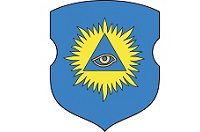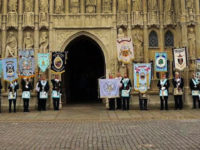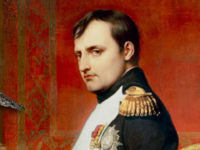“The Moon isn’t a bad place, anyway. It certainly deserves a short visit”, – this is what Neil Armstrong told journalists at the press conference after his return to Earth. But humanity paid a high price for this brief visit in resources and even human lives. Three American astronauts of the “Apollo-1” project burned alive a month before the planned flight. Armstrong himself miraculously survived, when he had to eject from a height of only 60 meters during training.
Despite all his efforts and a considerable number of training sessions, by the time Apollo 11 was launched, the Flight Control Centre in Houston was not giving the US government any firm guarantees of the success. President Richard Nixon, who wanted to bit the Soviet Union at the space race at all costs, deliberately took a considerable risk.
By the time Apollo was launched, the agitation around the moon flight had reached its highest intensity. Live broadcast of the launch on 16 July 1969, went to 33 countries. About a million more people came to Cape Canaveral to be present at the historic launch. It was a fantastic moment when three astronauts represented not only their country but all of humanity. Ambassadors of 135 countries handed them their nations’ flags to take them to the Moont. Medals honouring the memory of the recently deceased Soviet cosmonauts Vladimir Komarov and Yuri Gagarin were also given to them.
Buzz Aldrin, the pilot in the astronaut team, also carried with him another flag. It was a flag not of a country. It was the only flag he had with him for the lunar walk – the flag of the Supreme Council of the Scottish Rite, Southern Jurisdiction of the USA.
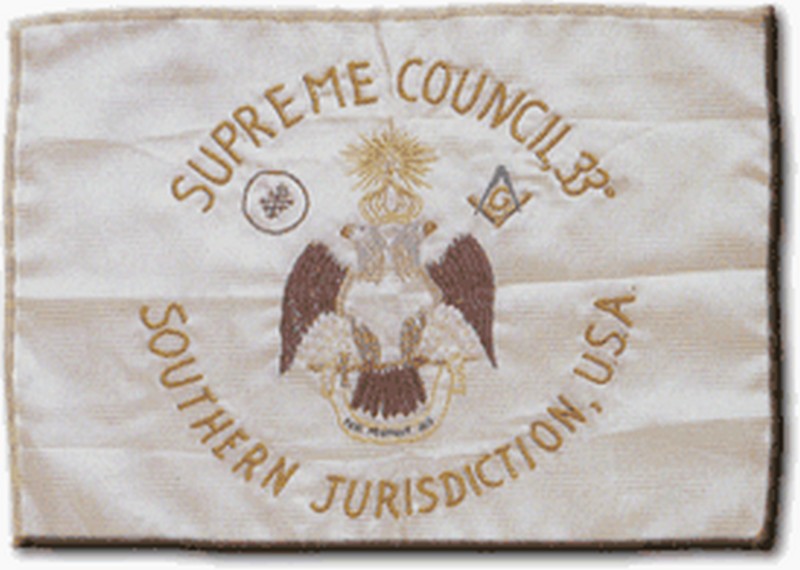
Flag of the Supreme Council of the Scottish Rite, Southern Jurisdiction of the USA
The second man on the Moon, Colonel Buzz Aldrin, set foot on the lunar surface 15 minutes after Neil Armstrong. He had enough to take care of during the moonwalk. Aldrin’s duties included unpacking and setting up the scientific instruments that were to remain on the Moon.
However, the astronaut found time and opportunity, having received permission from the Flight Control Centre, to recite a short prayer and perform a quick communion service. As an elder of the Presbyterian Church, he had every right to do so. The items necessary for the prayer, such as the chalice (the sacrament bowl), wine, and bread to bring gifts, were prepared in advance
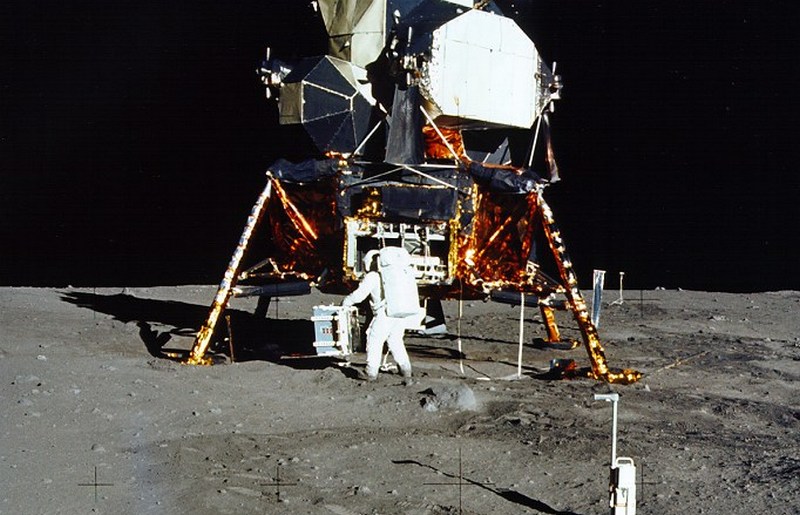
Buzz Aldrin was responsible for unpacking and installing scientific instruments near the lunar module.
“I’d like to ask everyone,” said Buzz Aldrin, “who is listening to me now, whoever and wherever he is, to take a moment and give thanks for the events of the past few hours”. Undoubtedly, it was the most significant time a person to ever say a prayer.
By the time Aldrin stepped on the lunar surface, he was a member of two Masonic lodges: Montclair Lodge No. 144 in New Jersey and Clear Lake Lodge No. 1417 in Seabrook, Texas, where he was invited to serve on the High Council and was ordained in the 33rd degree of the Ancient and Accepted Scottish Rite.
It was at a meeting of the High Council of Southern Jurisdiction where Buzz was charged with taking the Masonic flag to the Moon. Fortunately, it is very small in size, no bigger than a traditional Masonic cuff, so it was not difficult to place it in his space suit.
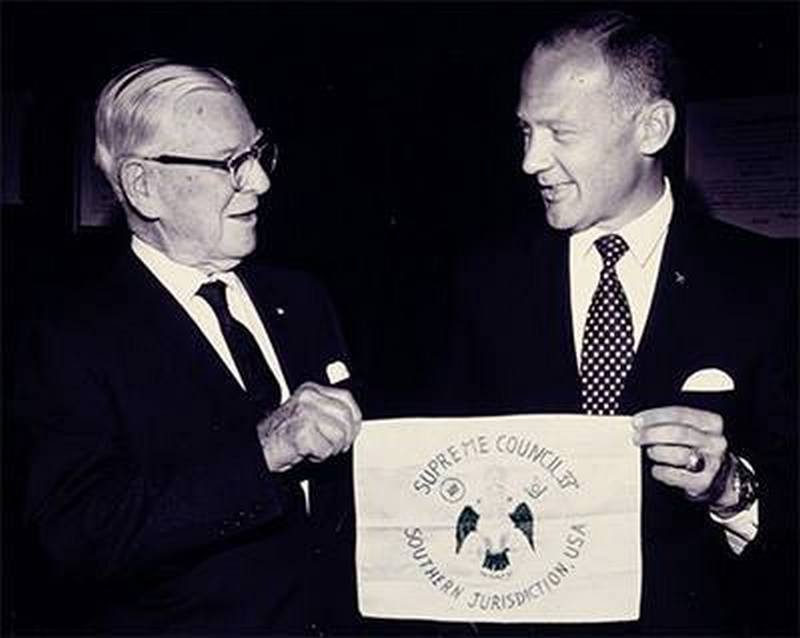
The Grand Master of the Grand Lodge of Texas, John Guy Smith, takes back the flag of the Lodge that was on the Moon.
As it turned out, in contrast to the numerous state flags that on their return to Earth turned into exotic exhibits (“…And here, in our museum lies the national flag, which was on the moon …”), a compact Masonic pennant had to perform a secret, critical mission. Taking it with him to the first lunar walk, Buzz Aldrin conducted the consecration of the first Masonic Lodge on the Moon, thus securing the right to open a branch – the Grand Provincial Moon Lodge – on the Moon. The landing of the lunar module has been made in the sea of Calmness. Therefore the new lodge had received the name Tranquility Lodge and got the number 2000, which, of course, also made deep sense.
The astronauts did not doubt that by 2000 there would be a permanent lunar base and it would be no harder to get there than to fly from San Francisco to Boston. It would only be a transfer point on the way to Mars or the rings of Saturn. Given how many Freemasons there were in NASA’s astronaut squad, it was quite logical to open a special lodge for them.
Today, looking from the 21st century’s point of view, these actions look childish and exotic. To understand what the American freemasons were guided by, it is necessary to remember what was the zeitgeist in the late 60s. The population of the USSR, for example, did not doubt that by 1980 communism would be built in the country. After all, this was just officially announced at the Communist Party congress by Nikita Khrushchev.
In rest of the world, however, the situation was precarious. America has not yet recovered from the assacination of John Kennedy in 1968. Robert Kennedy and Martin Luther King were assacinated aswell, adding to the shock of the national psyche. The war in Vietnam was still raging. The Caribbean crisis almost brought the world to the brink of nuclear anihilation, and the Cold War continued. In the US itself, the battle of the black population for civil rights was at its height. The six-day war in the Middle East between Israel and the surrounding Arab countries triggered a new wave of violence. After a series of military coups, India and Pakistan actively embarked on the path of the nuclear arms race. Europe was shocked by the 1968 French student revolution. Millions of young people around the world were protesting against militarism, joined the hippie movement and were actively participating in mass anti-war demonstrations.
Against the backdrop of all these upheavals, a flight to the Moon united the entire planet torn apart by conflict. Armstrong’s famous words about man’s small step and humanity’s huge leap were heard live by 680 million people around the world. Newscasts all over the world in most of the earth’s languages spoke about world peace. A sign left at the landing site said: “Here, people from planet Earth first set foot on the Moon, July 1969 AD. We came in peace for all humanity”.
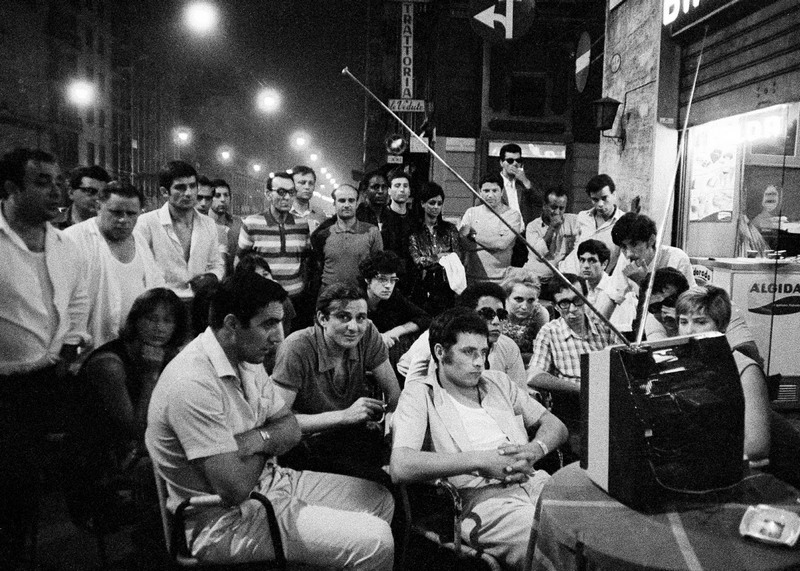
The whole world viewed the live broadcast from the Moon on dim black and white TV screens.
On this complex background, the Masons of the Grand Lodge of Texas thought the Masonic lunar Lodge could perform a unique mission – to establish Harmony on Earth. It was a bold plan aimed at the future. In this context, the name of the Lodge – Tranquility – took on a special deep meaning.
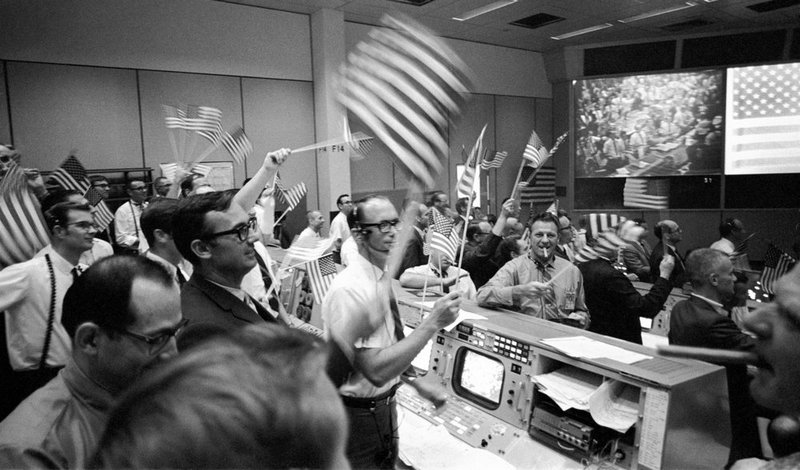
July 24, 1969. The Flight Control Centre has just learned that the Apollo 11 crew has safely returned to Earth.
The Tranquility Lodge’s coat of armsshows only three graphic objects: the traditional Masonic Square and Compasses, a map of the state of Texas and the rising of the Earth as it seemed when you observed from the Moon. The chevron for lunar walk suits, which was designed by Michael Collins, shows an American eagle approaching the surface of the Moon, but not with bare claws as usual, but with an olive branch of the world.
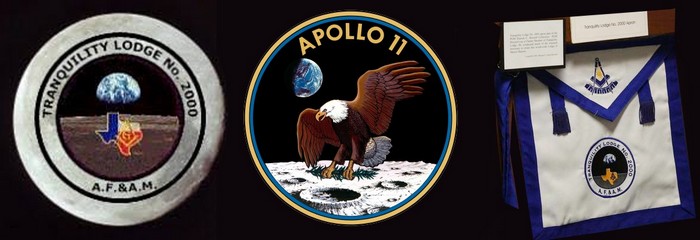
The coat of arms of the lodge “Tranquility”, a chevron on a suit and the Masonic apron of Aldrin Base, now stored in the museum.
The Provincial Lodge Tranquility No. 2000 was set to provide fraternal assistance to any Masonic and other worthy charitable organizations to make life better for all the inhabitants of the Earth.
The Grand Master of Texas John Guy Smith proved to be prudent enough to keep the information about the Masonic mission on the moon secret. Being a policeman by profession, a road patrolman of the state of Texas, he enjoyed high authority amongst Masons. He had a reputation of a relentless and effective leader. He made a press announcement just before the anniversary of the moonlanding. Researchers involved in the history of space exploration, having received this entirely new information, experienced a real shock.
But the main thing about this story is that the Tranquility Lodge No. 2000, founded in July 1969, is now still operating. As it is not yet possible to gather on the Moon for technical reasons, it is based in Texas under the Grand Lodge of The Southern Jurisdiction. Its members always emphasize that “it is so just for now”.
The Tranquility Lodge accepts master masons from all over the world as members and does not offer them any additional degrees. The Tranquility Lodge members meet quarterly in different cities in Texas, but an annual general meeting is held every July in Waco, Texas. The 50th anniversary of the lunar landing was celebrated with a festive meeting and banquet held directly at the Houston Space Centre.
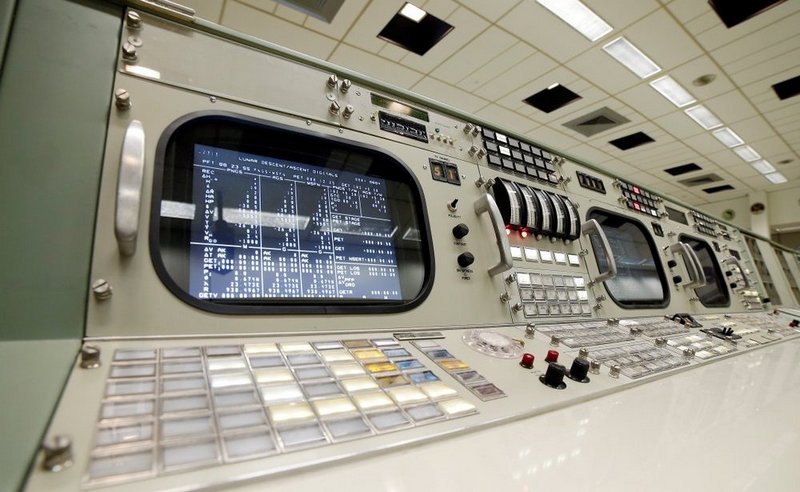
For the anniversary, the Flight Control Centre was rebuilt in Houston as it looked in 1969.
“The lodge has about 1,200 members from all over the world,” says Lodge Officer Phil Morehead. – There are freemasons from Germany, Japan, The Netherlands. However, we must have at least ten thousand members to achieve our current charitable plans. The Lodge is raising money for scholarships in science and technology, for teachers and scientists involved in aeronautics and space exploration. The organization also financially supports the Conrad Foundation, created in memory of this Masonic astronaut.
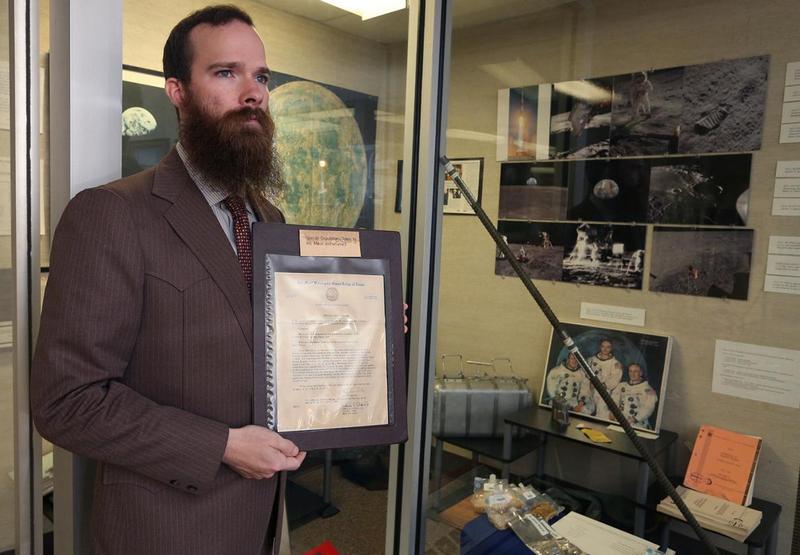
Today the silk “lunar” flag of the Grand Lodge of Texas is on display in the Masonic Temple in Washington, DC.
Edwin Eugene “Buzz” Aldrin, Jr. was born on January 20, 1930, in a small town of Glen Ridge, near Montclair, New Jersey. He graduated from the United States Military Academy in 1951 and served in the Air Force.
In his hometown, Buzz Aldrin became a member of the Order of Freemasons. On February 21, 1956, he was raised to the sublime degree of a master mason, in Lodge 144 Montclair. In 1971, after returning from the Moon, the astronaut received the highest Masonic award from the Grand Lodge of New York State.
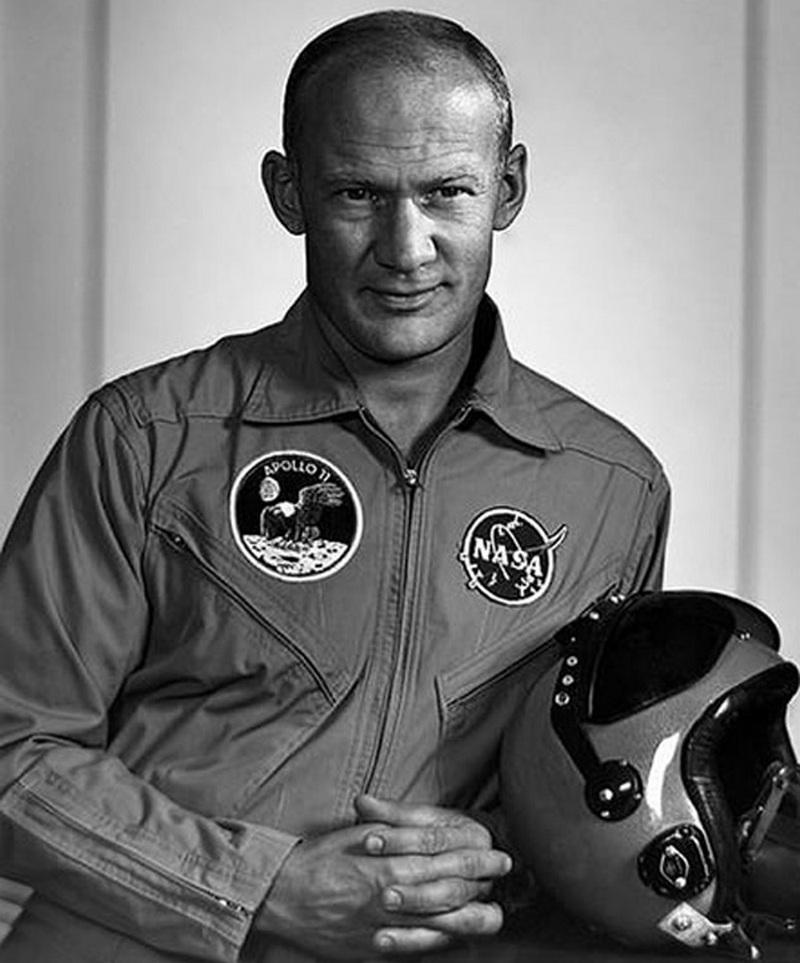
In 1969, when he flew to the Moon, Buzz Aldrin was one of the most experienced pilots in the astronaut squad.
In 1959, Aldrin went to the Massachusetts Institute of Technology. In 1963 he becamea PgD in spacecraft docking and was admitted to the astronaut group at the National Aeronautics and Space Administration of the USA.
Aldrin was the first astronaut to dive into the water in a spacesuit during training. He flew the Gemini-12 spaceship as a co-pilot in November 1965, with John Lovell. During the flight, he completed an EVA which lasted two hours and ten minutes.

Aldrin’s affiliation with the Freemasons was marked in philately by two special envelopes.
Aldrin was directly involved in the development of rapprochement technology for the Apollo and Gemini spacecraft. In memory of these achievements, a crater on the back side of the Moon is named after Aldrin.
Buzz Aldrin was the first freemason to visit the Moon, but not the first brother in space. He was preceded and followed by many worthy brothers:
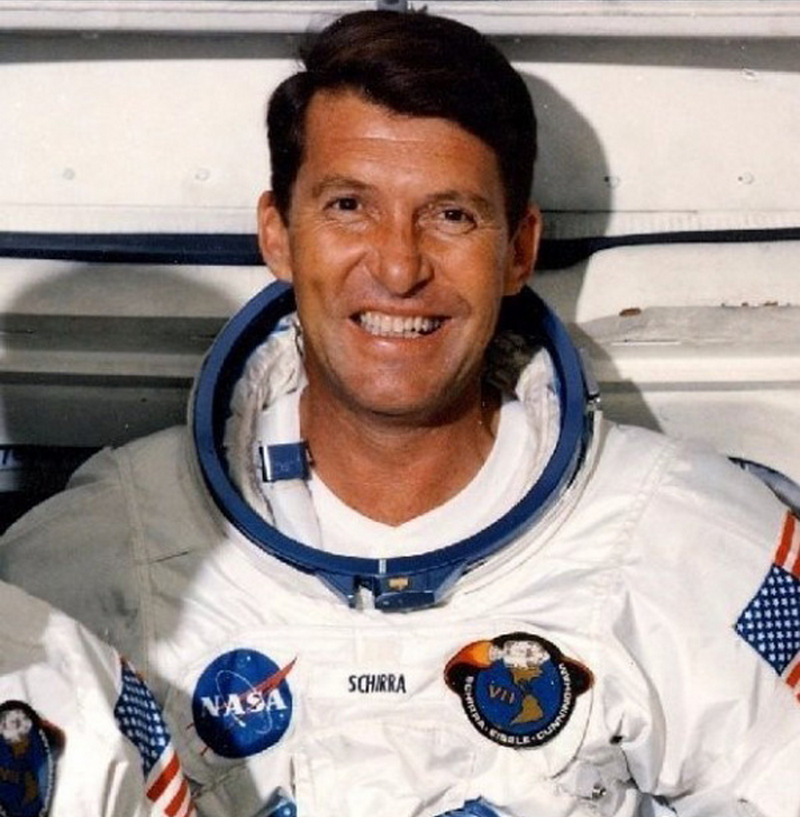
Wally Schirra
– Walter Schirra (12.03.1923 – 3.05.2017), member of Canaveral Lodge 339, Florida, captain first rank of the US Navy, was the first in the world to perform three space missions with a total duration of 12 days and 7 hours.
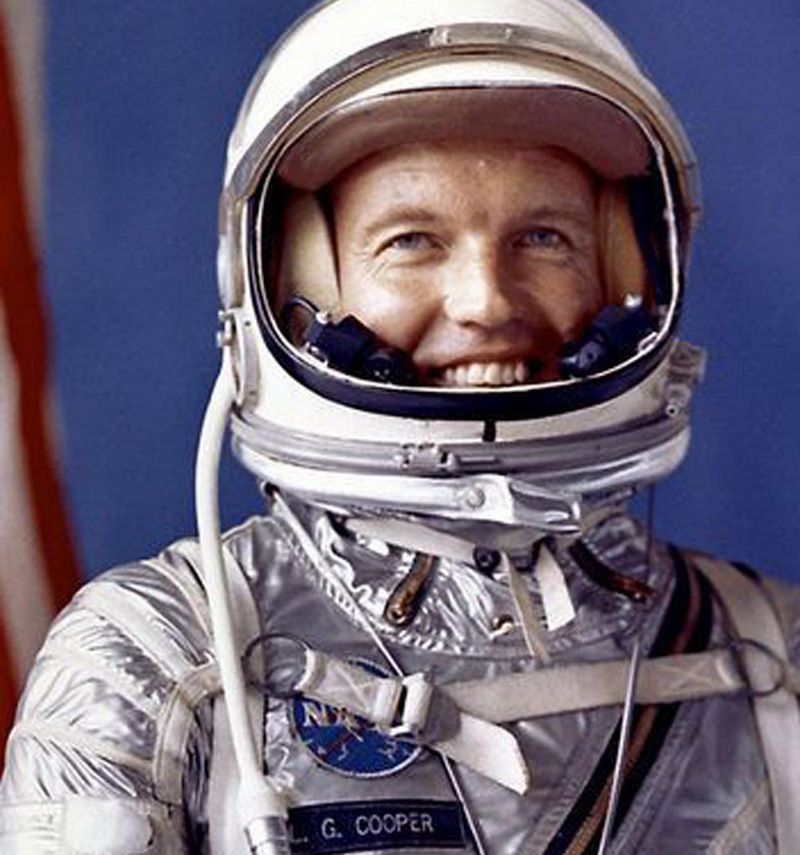
Gordon Cooper
– Gordon Cooper (6.03.1927 – 4.10.2004), a member of the Carbondale lodge № 82, Colorado, a mason of the 33rd degree of Scottish Rite, Lieutenant Colonel of the Air Force, became the first astronaut in the world, who made two orbital space flights.
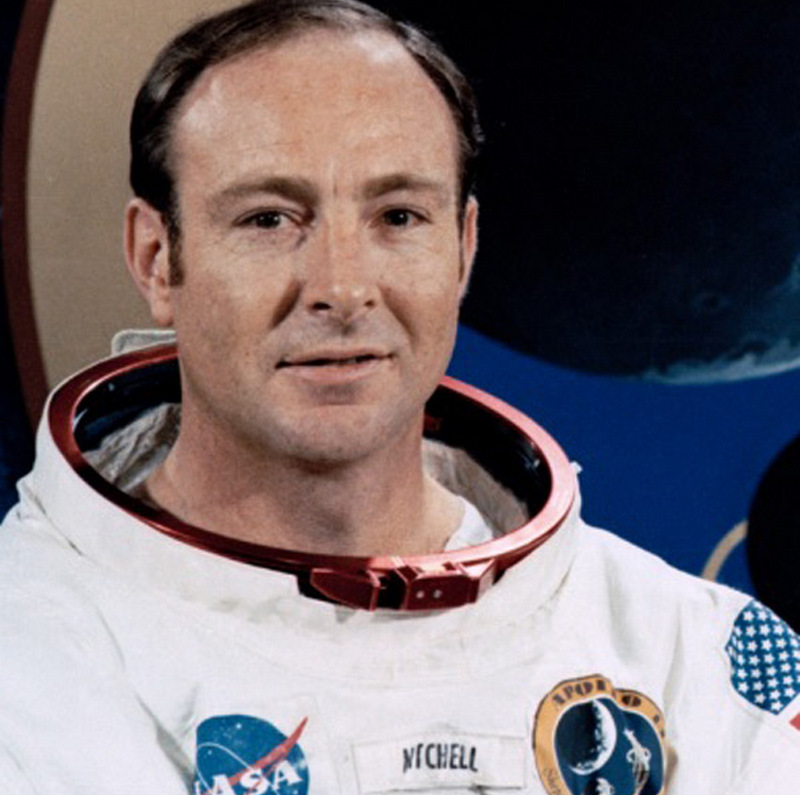
Edgar Mitchell
– Edgar Mitchell (17.09.1930 – 4.02.2016), member of the Lodge Artesia № 28, New Maryland, a captain first rank of the US Navy, Doctor of Sciences in Aeronautics and Astronautics, February 1-10, 1971 in the squad with A. Shepherd, S. Mitchell and S. Rusa flew to the Moon as a pilot of the lunar module of “Apollo-14”, became the sixth man on the Moon.
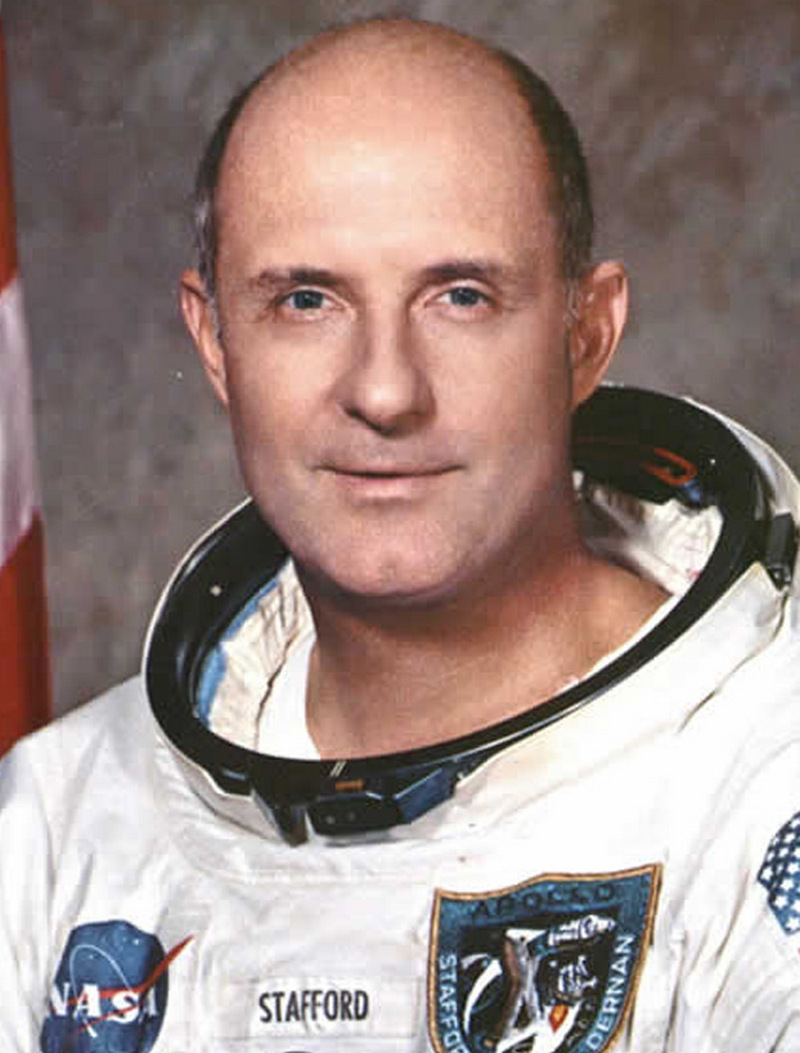
Thomas Stafford
– Thomas Stafford (born 17.09.1930), a member of the Western Star lodge number 138, Oklahoma, Brigadier General of the Air Force, Bachelor of Science, head of the school for training pilots for aerospace research, the author of several books on spacecraft, December 15-16, 1965 conducted a space flight on the Gemini-6. 18-26 May 1969 Stafford flew to the Moon as commander of the Apollo 10. During the next flight, July 15-25, 1975, he twice docked the Apollo spacecraft with the Soviet spaceship Soyuz-19.
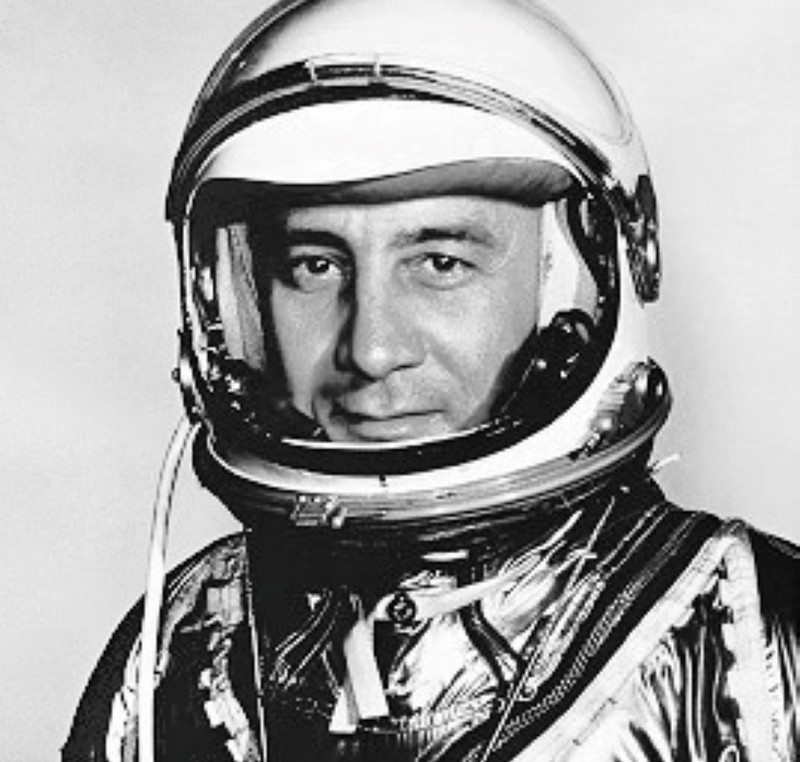
Virgil Grissom
Astronaut Virgil Grissom was also Mason, who died in a fire that broke out during a test flight aboard Apollo 1.
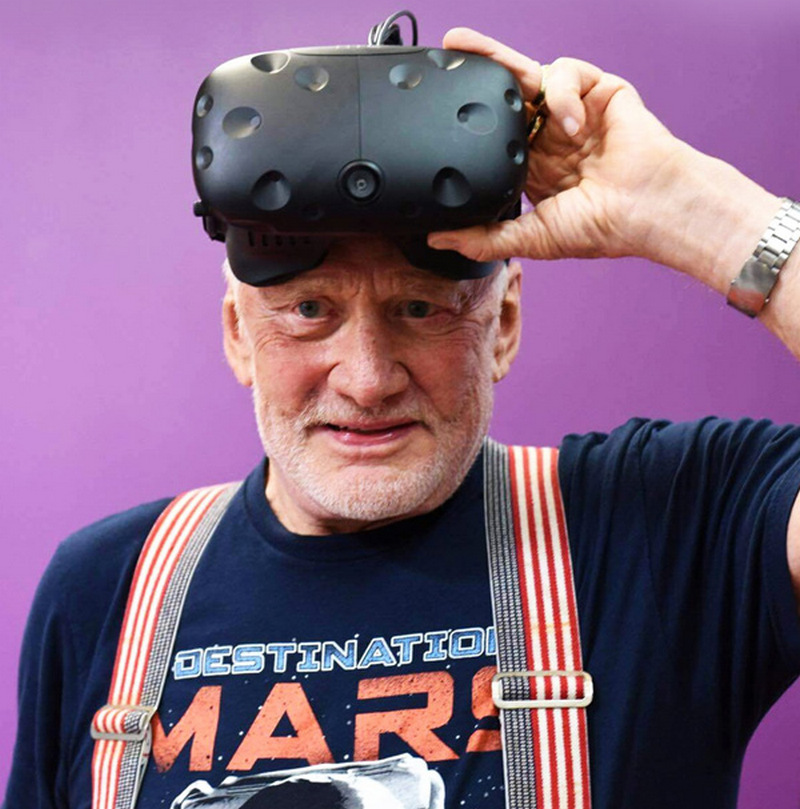
Edwin “Buzz” Aldrin celebrated his 90th anniversary on January 20, 2020.
Today, despite his age, Buzz Aldrin is involved in the development of flights to Mars. He’s full of energy and ready to fly.
Sources:
Lodge Tranquility Site
Facebook page of Lodge Tranquility
Великая ложа Техаса
Restored Mission Control comes alive 50 years after Apollo
Masonic moonshot: How Buzz Aldrin’s journey 50 years ago inspired a Waco-based lunar lodge





